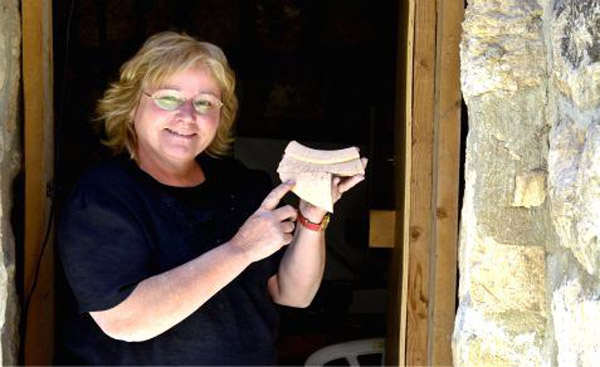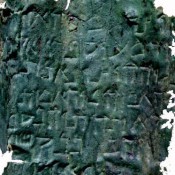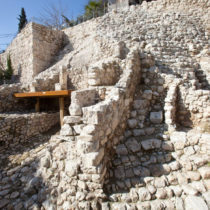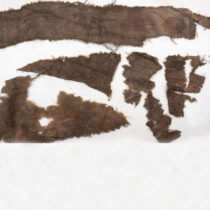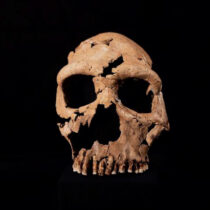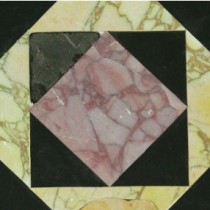Hebrew University archaeologists have found the oldest known alphabetical inscription from Jerusalem, dating back to the period of Kings David or Solomon, 250 years before the previously oldest known written text.
The inscription was found near the Temple Mount and was from the pre-Temple period. Hebrew University of Jerusalem archaeologist Dr. Eilat Mazar found it engraved on a partially surviving large pithos, a neckless ceramic jar found with six more ostraca of similar character and craftsmanship at the Ophel excavation site. She said it is the only one of its kind discovered in Jerusalem and is an important addition to the city’s history. As the oldest known script, in Hebrew, was from the period of King Hezekiah at the end of the 8th century BC, this one is estimated to be the earliest alphabetical inscription ever found in Jerusalem.
However, this one is not in Hebrew but likely to have been written by one of the non-Israeli residents of Jerusalem, perhaps Jebusites, who were part of the city population in the time of Kings David and Solomon. Reading from left to right, the text contains a combination of letters approximately 2.5 cm tall, which translate to m, q, p, h, n, (possibly) l, and n. Since this combination of letters has no meaning in known west-Semitic languages, the inscription’s meaning is unknown. The archaeologists suspect the inscription specifies the jar’s contents or the name of its owner.
The inscription was engraved near the edge of the jar before it was fired. According to Prof. Ahituv, the inscription is not complete and probably wound around the jar’s shoulder, while the remaining portion is just the end of the inscription and one letter from the beginning.
The jar fragments found alongside the inscribed ostracon were used to stabilize the earth fill under the second floor of the building they were discovered in. An analysis of the jars’ clay composition indicates that they are all of a similar make, and probably originate in the central hill country near Jerusalem.
